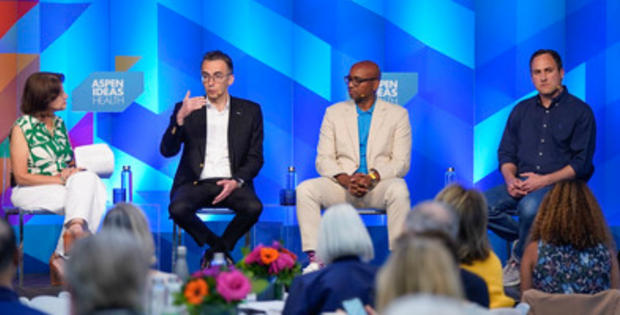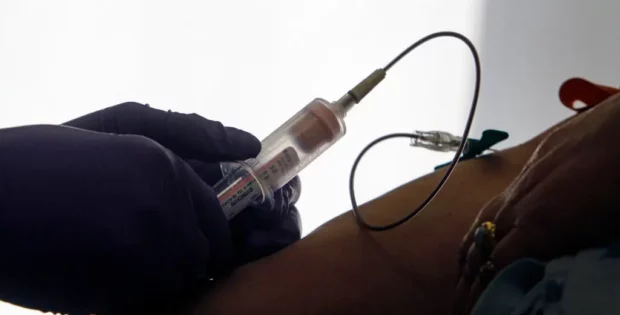Health Literacy and Colorectal Cancer Screening

“Medical jargon is killing us.” That’s according to Dr. Lisa Fitzpatrick. She is the founder of Grapevine Health, an organization providing trusted, data-driven, and relatable health information through trusted messengers. Dr. Fitzpatrick is on a mission to make health information less intimidating. She says that medical jargon is a thing of the past and health literacy is now en vogue – and can save patients’ lives.
So, what exactly is health literacy?
The US Department of Health and Human Services’ Healthy People 2030 defines it this way: personal health literacy is the degree to which individuals have the ability to find, understand, and use information and services to inform health-related decisions and actions for themselves and others. One of the initiative’s overarching goals demonstrates this focus: “Eliminate health disparities, achieve health equity, and attain health literacy to improve the health and well-being of all.”2
Health illiteracy is a national public health threat
The association between limited health literacy and poor health is well established. Evidence shows that limited health literacy is associated with more hospitalizations; greater use of emergency care; lower receipt of mammography screening and influenza vaccine; poorer ability to demonstrate taking medications properly; poorer ability to interpret drug labels and health messages; and, among elderly persons, poorer overall health status and higher mortality rates.3 To improve the health status within and across various populations, we must understand where the knowledge gaps lie and find solutions to bridge the gap.
Using health literacy to increase colorectal cancer screening rates
In the U.S, colorectal cancer (CRC) continues to be one of the deadliest and most preventable forms of cancer. For individuals who are asymptomatic and at average risk for colorectal cancer, being up-to-date with screening is a proven health intervention that saves lives. Around 76% of CRC-related deaths are in individuals not up to date with screening.1
Despite the availability of multiple CRC screening options, screening participation rates have plateaued well below the compliance goal of 80% set for the United States by leading health organizations.1 Amongst the general population, there is a lack of awareness around CRC screening recommendations. The US Preventative Services Task Force (USPSTF) recommends that adults at average-risk aged 45-75 be screened for CRC using either invasive or non-invasive modalities.

At Guardant Health, we evaluated the knowledge (literacy) and hesitations of individuals regarding CRC methods by commissioning a survey which was conducted by Morning Consult. It was administered online from June 21 to July 13, 2021. Results were compared between individuals who were up to date with their screening and those who were not up to date. Up to date individuals were defined as participants who had either gotten a colonoscopy within the last 10 years or had taken another type of test (stool or blood) within the past 3 years.
And the results are in…
A total of 1703 adults between the ages of 45 to 84 were surveyed and out of these adults, 830 were up to date with CRC screening whereas 873 were not. One-third (33%) of those surveyed believed that a colonoscopy was the only reliable form of screening. It’s not. There are other reliable forms of FDA (Food and Drug Administration) approved and guideline recommended screening tools, including some that are non-invasive.
The survey revealed that almost a quarter (21%) thought screenings were only for those over 50. The fact is that since May of 2018, in response to rising rates of colorectal cancer in younger people, The American Cancer Society has recommended regular CRC screening for individuals at average risk starting at 45 years old.4 In May of 2021, the U.S Preventive Services Task Force (USPSTF) lowered its recommendations for CRC screening from age 50 to now starting at age 45.
Survey participants (45%) also believed that colonoscopies and stool-based tests were seen as equally safe, even though colonoscopies require more invasive, riskier procedural elements such as anesthesia. And 33% of participants said that being asymptomatic for CRC was the primary reason they chose not to get screened which was a bit surprising since preventive care is meant for the average-risk population, most of whom are asymptomatic.
There is an apparent gap in literacy regarding CRC screening methods.
So, how do we bridge these knowledge gaps? Dr. Lisa Fitzpatrick of Grapevine Health wrote in an article for Forbes that “we can start by consistently listening to the community to deeply understand the experiences that inform their beliefs and acceptance or rejection of credible health information. The more we understand how and why we fail to deliver impactful health and science information, the better we can respond.”
To achieve a health literate society, it is vital that we recognize this gap in health literacy, eliminate barriers, and improve the way health care professionals communicate health information. This is how we begin to overcome medical jargon and save lives through improved health literacy.


